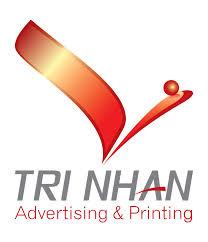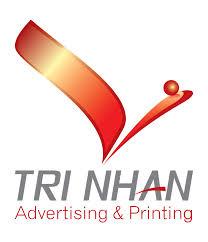The Polarized Electric Capacitor Market Share is experiencing significant growth as electronics manufacturers increasingly demand reliable and efficient energy storage solutions. As Per Market Research Future, rising adoption of consumer electronics, industrial automation, and automotive electronics are driving the global demand for polarized electric capacitors.
Understanding Polarized Electric Capacitors
Polarized electric capacitors are electronic components designed to store electrical energy and release it in a controlled manner. Unlike non-polarized capacitors, these components have a positive and negative terminal and must be connected correctly in circuits to function properly.
These capacitors are widely used for energy storage, voltage regulation, filtering, and signal processing in various electronic applications. Their ability to maintain stable performance under varying electrical loads makes them essential for modern electronics and industrial systems.
Applications Across Industries
Polarized electric capacitors are employed in a variety of sectors:
-
Consumer Electronics: Used in smartphones, laptops, tablets, and household appliances for energy storage and signal smoothing.
-
Automotive Electronics: Critical for electric vehicles (EVs), hybrid vehicles, and advanced driver-assistance systems (ADAS) to manage power distribution.
-
Industrial Automation: Support efficient operation of machinery, robotics, and automated control systems.
-
Power Supplies and Converters: Maintain voltage stability and smooth out fluctuations in power supply circuits.
Their versatility and reliability make them integral to efficient energy management and stable electronic operation.
Market Drivers
Several factors are driving the growth of the polarized electric capacitor market:
-
Rising Consumer Electronics Demand: Increasing adoption of smart devices and wearable technology boosts capacitor requirements.
-
Automotive Industry Expansion: Growth in EVs and automotive electronics increases the need for high-performance capacitors.
-
Industrial Automation Growth: Automation and robotics systems require stable energy storage and voltage regulation.
-
Miniaturization of Electronics: Compact and high-capacitance capacitors are increasingly required for small, portable devices.
These drivers collectively stimulate market demand and encourage innovation in capacitor technologies.
Technological Advancements
Technological innovations are enhancing the efficiency, durability, and performance of polarized electric capacitors:
-
High Capacitance Materials: Advanced dielectric materials improve energy storage capacity and reliability.
-
Compact and Lightweight Designs: Reduce size and weight for portable electronics while maintaining high performance.
-
Temperature and Voltage Stability: Modern capacitors withstand wide temperature ranges and voltage fluctuations.
-
Longer Lifespan: Improved designs and materials increase operational durability, reducing replacement frequency.
These advancements make polarized capacitors more efficient, reliable, and suitable for a broad range of applications.
Environmental and Regulatory Considerations
Environmental sustainability is increasingly influencing capacitor design and manufacturing. Lead-free and RoHS-compliant capacitors are becoming standard, reducing harmful materials and environmental impact.
Regulatory guidelines ensure that capacitors meet safety, performance, and quality standards, particularly in sensitive applications like medical electronics and automotive systems. Compliance with these standards protects users and enhances the market acceptance of high-quality capacitors.
Regional Market Insights
Regional demand for polarized electric capacitors is influenced by industrial growth, electronics adoption, and automotive production:
-
Asia-Pacific: Dominates due to high electronics manufacturing, growing EV market, and industrial automation.
-
North America: Driven by automotive electronics, aerospace, and renewable energy integration.
-
Europe: Focus on industrial automation, energy-efficient systems, and automotive electronics boosts demand.
-
Middle East & Africa: Emerging electronics manufacturing and infrastructure development present gradual growth opportunities.
Regions with strong electronics, automotive, and industrial sectors demonstrate higher market adoption.
Challenges in the Market
Despite growth opportunities, the market faces challenges:
-
Fluctuating Raw Material Prices: Aluminum and dielectric materials can affect production costs.
-
Technical Expertise Required: Manufacturing high-performance capacitors requires precision and specialized knowledge.
-
Competitive Market Landscape: Strong competition necessitates continuous innovation and cost management.
Companies addressing these challenges with innovation, cost efficiency, and quality assurance are likely to gain competitive advantages.
Future Outlook
The outlook for the polarized electric capacitor market is highly positive. Rising demand in consumer electronics, electric vehicles, industrial automation, and power management solutions is expected to sustain growth.
Advances in materials, miniaturization, and enhanced performance will enable capacitors to meet the evolving requirements of modern electronics. Manufacturers investing in research, innovation, and scalable production are well-positioned to capture a significant share of this growing market.
FAQs
1. What is a polarized electric capacitor?
It is an electronic component with positive and negative terminals that stores energy and regulates voltage in circuits.
2. Where are polarized electric capacitors used?
They are used in consumer electronics, automotive systems, industrial automation, and power supply circuits for energy storage and voltage regulation.
3. How do technological advancements improve capacitors?
High-capacitance materials, compact designs, temperature and voltage stability, and longer lifespan enhance efficiency, reliability, and performance.
More Related Reports:


